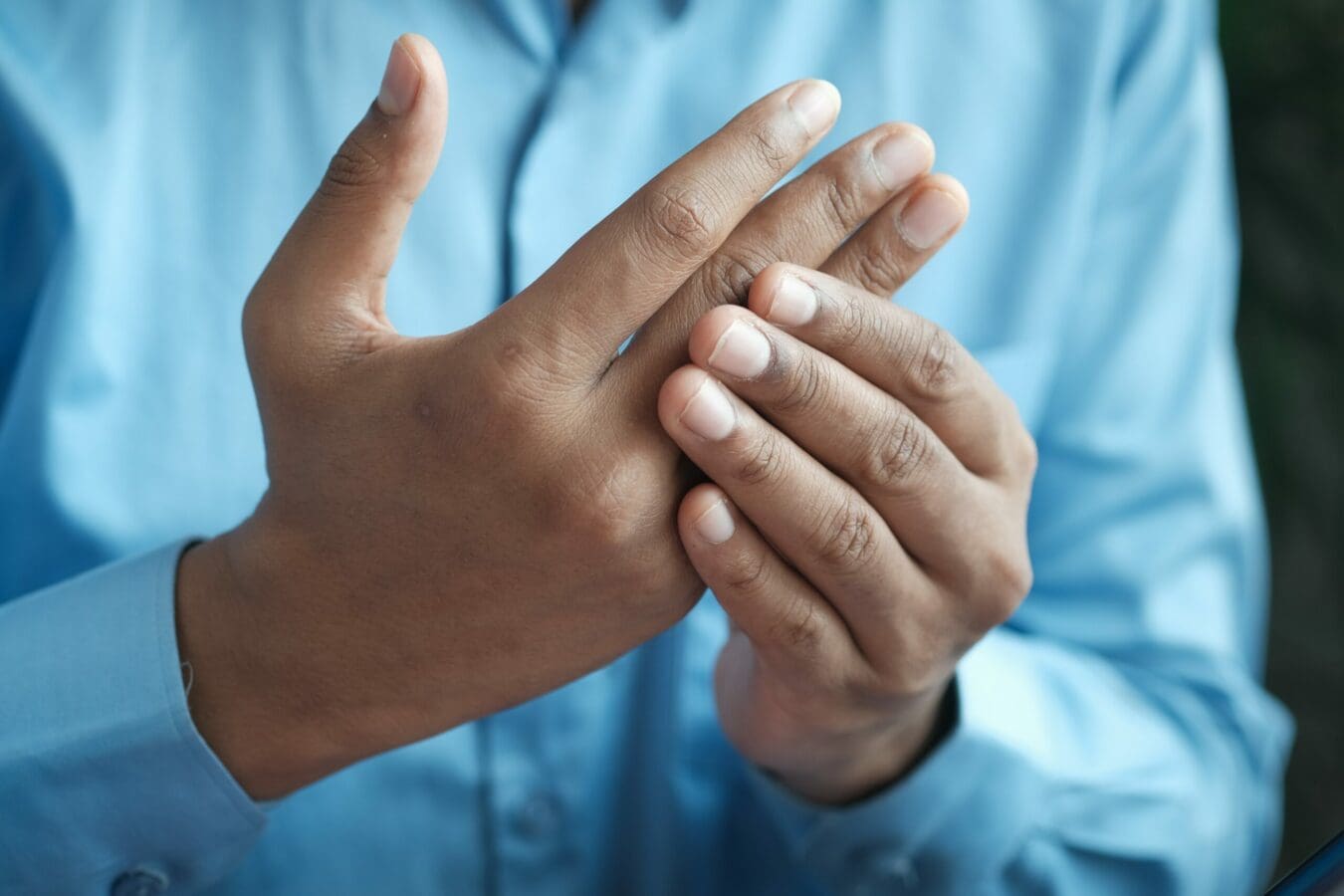Curcumin has been used in traditional Ayurvedic medicine to treat a wide variety of ailments, including arthritis. Arthritis is a chronic condition that affects millions of people worldwide, characterized by inflammation and pain in the joints. In this article, we will explore the scientific evidence behind the potential benefits of curcumin in treating arthritis.
What is curcumin?
Curcumin is a polyphenol compound found in the Curcuma longa plant. It is responsible for the yellow color of turmeric, which is widely used as a spice in South Asian cuisine. Curcumin has been shown to have anti-inflammatory, antioxidant, and anti-cancer properties, and it has been used in traditional Ayurvedic medicine for thousands of years to treat a variety of conditions.
Curcumin has a complex chemical structure that makes it difficult to absorb by the body. However, researchers have found ways to improve its bioavailability, which is the amount of a substance that can be absorbed by the body and used effectively. Some of the methods used to enhance the bioavailability of curcumin include using liposomal formulations, combining it with piperine (a compound found in black pepper), and using nanoparticles.
How does curcumin work?
Curcumin has been shown to have a wide range of therapeutic effects, including anti-inflammatory, antioxidant, and anti-cancer properties. In the context of arthritis, curcumin’s anti-inflammatory effects are of particular interest.
Arthritis is a chronic condition characterized by inflammation and pain in the joints. Inflammation is a natural response of the body’s immune system to injury or infection. However, in chronic conditions like arthritis, the immune system becomes overactive, leading to chronic inflammation, which can damage the joints and cause pain.
Curcumin has been shown to inhibit the production of inflammatory cytokines, which are proteins that play a key role in the inflammatory response. In particular, curcumin has been shown to inhibit the production of interleukin-1 (IL-1), interleukin-6 (IL-6), and tumor necrosis factor-alpha (TNF-alpha), all of which are involved in the pathogenesis of arthritis.
Curcumin has also been shown to inhibit the activity of cyclooxygenase-2 (COX-2) enzymes, which are responsible for the production of prostaglandins, molecules that play a key role in inflammation. Non-steroidal anti-inflammatory drugs (NSAIDs), such as aspirin and ibuprofen, work by inhibiting COX-2 enzymes. However, NSAIDs can have side effects, such as stomach ulcers and bleeding, and long-term use can increase the risk of heart attack and stroke. Curcumin, on the other hand, has been shown to inhibit COX-2 enzymes without causing the side effects associated with NSAIDs.
Curcumin has also been shown to have antioxidant properties, meaning that it can neutralize free radicals, molecules that can damage cells and contribute to the development of chronic diseases. Arthritis is associated with oxidative stress, which is an imbalance between the production of free radicals and the body’s ability to neutralize them. Curcumin’s antioxidant properties may help reduce oxidative stress and protect against the development of arthritis.
Different types of Arthritis
Arthritis is a common condition that causes inflammation in the joints, leading to pain, stiffness, and reduced mobility. There are many different types of reactive arthritis, each with its own causes and symptoms.
Juvenile idiopathic arthritis (JIA), also known as juvenile rheumatoid arthritis, is a type of arthritis that affects children under the age of 16. The exact cause of JIA is not known, but it is thought to be an autoimmune disorder. Symptoms can include joint pain, stiffness, swelling, and loss of range of motion. Treatment for JIA may include medications to reduce inflammation and pain, physical therapy to improve joint function, and lifestyle changes such as exercise and weight management.
Septic arthritis is a type of arthritis that occurs when a joint becomes infected with bacteria, viruses, or fungi. Symptoms can include joint pain, redness, swelling, and fever. Treatment for septic arthritis usually involves antibiotics and drainage of the infected joint.
Rheumatoid arthritis (RA) is a type of autoimmune arthritis that can affect any joint in the body, but most commonly affects the hands, wrists, and knees. Symptoms of RA can include joint pain, stiffness, swelling, fatigue, and fever. Treatment for RA may include medications to reduce inflammation and pain, physical therapy, and lifestyle changes such as exercise and weight management.
Symptoms
Arthritis of the hand is a common form of osteoarthritis that affects the joints in the fingers and thumb. Symptoms can include pain, stiffness, and swelling in the affected joints, as well as reduced grip strength. Treatment for hand arthritis may include medications, splints or braces, and exercises to improve joint function.
Arthritis in the knee is also a common form of osteoarthritis that affects the knee joint. Symptoms can include pain, stiffness, swelling, and reduced mobility. Treatment for knee arthritis may include medications, physical therapy, and lifestyle changes such as weight management.
Arthritis of the hip is another form of osteoarthritis that affects the hip joint. Symptoms can include pain, stiffness, and reduced mobility in the affected hip joint. Treatment for hip arthritis may include medications, physical therapy, and in severe cases, surgery to replace the damaged joint.
While there is no cure for arthritis, treatments are available to help manage symptoms and improve quality of life. It is important to work with a healthcare provider to determine the best course of treatment for your specific type of arthritis and individual needs.
What does the research say about curcumin and arthritis?
There is a growing body of scientific evidence suggesting that curcumin may be an effective treatment for arthritis. In particular, curcumin has been studied in the context of rheumatoid arthritis (RA), which is a chronic autoimmune condition that affects approximately 1% of the population worldwide.
A 2016 systematic review and meta-analysis of randomized controlled trials (RCTs) found that curcumin was effective in reducing pain and inflammation in patients with RA. The review analyzed nine RCTs with a total of 732 patients and found that curcumin was associated with significant reductions in joint pain and swelling, as well as improvements in physical function.
Another study published in the Journal of Clinical Rheumatology in 2012 found that curcumin was as effective as diclofenac sodium, a commonly used NSAID, in reducing pain and inflammation in patients with knee osteoarthritis. The study included 139 patients with knee osteoarthritis who were randomized to receive either curcumin or diclofenac sodium for six weeks. The researchers found that both treatments were equally effective in reducing pain and improving physical function, but curcumin had fewer side effects than diclofenac sodium.
A 2014 randomized, double-blind, placebo-controlled trial published in the Journal of Medicinal Food found that curcumin was effective in reducing joint pain and stiffness in patients with osteoarthritis. The study included 40 patients with knee osteoarthritis who were randomized to receive either curcumin or a placebo for six weeks. The researchers found that the patients who received curcumin had significant reductions in joint pain and stiffness compared to those who received the placebo.
Immunomodulatory effects
In addition to its anti-inflammatory properties, curcumin has also been shown to have immunomodulatory effects, meaning that it can modulate the immune system’s response to inflammation. This may be particularly relevant in the context of RA, which is characterized by an overactive immune system.
A 2012 study published in the Journal of Clinical Immunology found that curcumin inhibited the production of several pro-inflammatory cytokines in patients with RA, including IL-1beta, IL-6, and TNF-alpha. The study included 45 patients with RA who were randomized to receive either curcumin or a placebo for eight weeks. The researchers found that the patients who received curcumin had significant reductions in the levels of pro-inflammatory cytokines, as well as improvements in disease activity scores.
Studies
Another study published in the International Journal of Molecular Sciences in 2019 found that curcumin modulated the activity of T cells, which are immune cells that play a key role in the pathogenesis of RA. The study included a review of the scientific literature on curcumin and RA, as well as a laboratory study in which the researchers investigated the effects of curcumin on T cells. The researchers found that curcumin had a modulatory effect on T cells, which may help reduce inflammation and slow the progression of RA.
Takeaways
Curcumin is a natural compound with a wide range of therapeutic effects, including anti-inflammatory, antioxidant, and immunomodulatory properties. There is growing scientific evidence to support the use of curcumin as a treatment for arthritis, particularly in the context of RA and osteoarthritis. Curcumin has been shown to reduce joint pain and swelling, improve physical function, and modulate the immune system’s response to inflammation. Furthermore, curcumin has been shown to have fewer side effects than traditional NSAIDs, making it a potentially safer alternative for long-term use. However, more research is needed to fully understand the mechanisms by which curcumin exerts its therapeutic effects and to determine the optimal dose and formulation for treating arthritis.
Turmeric, and its active compound curcumin, have gained popularity as natural remedies for arthritis pain relief. Here are some tips on how to use turmeric for arthritis pain and why it is the best option:
- Choose the Best Turmeric to treat Arthritis Pain
When selecting turmeric for arthritis pain, look for supplements that contain at least 95% curcuminoids. These are the active compounds that give turmeric its anti-inflammatory properties. You can also use fresh or ground turmeric in your cooking.
- Curcumin for Joint Pain
Curcumin has been found to have potent anti-inflammatory and pain-relieving properties, which make it an effective treatment for arthritis pain. It works by inhibiting the production of inflammatory cytokines, such as TNF-α and IL-6, and reducing oxidative stress in joint tissues.
- How to Use Turmeric for Arthritis
You can incorporate turmeric into your diet by adding it to curries, soups, and smoothies. Turmeric supplements are also available in capsule form. A typical dosage is 500-2,000 mg of curcumin per day.
- Curcumin Benefits
Aside from reducing joint pain, curcumin has a host of other health benefits, including reducing inflammation throughout the body, improving brain function, and reducing the risk of chronic diseases such as heart disease, diabetes, and cancer.
What is the main cause of arthritis?
There are several types of arthritis, and the causes can vary depending on the type. However, the main cause of most forms of arthritis is inflammation in the joints. This inflammation can be caused by a variety of factors, including injury, infection, genetics, and wear and tear on the joints over time.
What are 5 symptoms of rheumatoid arthritis?
The symptoms of arthritis can vary depending on the type of arthritis and the severity of the condition. However, some common symptoms include:
- Pain and stiffness in the joints
- Swelling and redness in the joints
- Limited range of motion in the affected joints
- Fatigue and weakness
- Difficulty with daily tasks such as walking, climbing stairs, and gripping objects
Can arthritis be cured or treated?
There is no cure for most types of arthritis, but the symptoms can be managed through various treatments. These may include medications to reduce inflammation and pain, physical therapy to improve joint function and flexibility, and lifestyle changes such as exercise and weight management. In some cases, surgery may be necessary to repair or replace damaged joints.
Where does arthritis usually start?
Arthritis can affect any joint in the body, but it most commonly affects the hands, wrists, knees, hips, and spine. The symptoms of arthritis can start gradually and may be mild at first, but they can worsen over time if left untreated. It is important to see a healthcare provider if you are experiencing joint pain or other symptoms of arthritis, as early treatment can help prevent further joint damage and improve quality of life.





